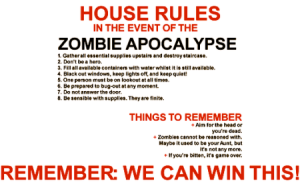I first wrote this post in 2012 as an article for Catalyst Magazine, back in my days as a columnist writing about bicycle commuting. Now, having just finished a Christmas season filled with commercials telling us how much better our lives will be if we just buy the newest whatever, I thought it deserves an update. Though it’s specifically about bicycling, it has application to any new toy.
GEAR IS GOOD
Famous Wall Street bicyclist Gordon Gekko once said, “Gear is good.” If you don’t believe Gordon, just look at any magazine rack. The shelves are crammed with magazines telling us which of the new toys are absolutely must-have for summer 2020.
Owning a shiny new kryptonite bicycle in deep ruby with flecks of gold that makes looking at it something akin to peering into the depths of the cosmos is a transcendent joy. Man’s fascination with the latest gear goes back a million years or more. Sometime after the last Ice Age ended a Neanderthal named Ralph was idly tapping at the end of a stick with a piece of flint while keeping a wary eye out for saber-tooth cave weasels. Ralph noticed that he could shape the stick into a point. Interesting, but not too useful until that night when he tried to pluck his piece of warthog out of the fire and burned his fingers.
Ralph poked at the warthog with his sharpened stick and to his surprise the stick pierced the crispy meat and he pulled it easily from the fire. After a few nights of experimentation, Ralph concluded that a longer stick meant he could sit farther from the fire and still enjoy his warthog. But his stick’s true usefulness came a week later when a saber-tooth cave weasel, drawn by the pungent smell of roasting warthog, skulked into the cave. As the clan hooted and threw rocks, the cave weasel advanced. In desperation Ralph threw his eating stick. The stick punctured the cave weasel’s heart and it dropped dead.
Ralph was the toast of the clan for several weeks until one night another Neanderthal named Ed showed up with a spear on which he had rubbed charcoal, making it black and therefore, Ed claimed, better than Ralph’s design. All the other clan members were impressed, even though no one understood how this made the spear better. This is the first recorded instance of carbon-improved technology. Now, of course, there are carbon-fiber frames, poly-carbonate tubes and all sorts of stuff based on carbon.
Meanwhile, Ralph’s wife Alice was busy developing gear for the modern Neanderthal cave-wife. Alice found a hollowed out log about a foot long. After shaking out the ants she discovered she could put the cooked warthog in the log and keep it warm until Ralph got home at night. Alice’s friend and Ed’s wife Trixie made improvements by stuffing dried moss in the ends of the log. Soon Alice and Trixie were showing their new line of cave-ware to all the clan members and started a phenomenon that became known as the Tupperware party. Man’s (and woman’s) quest for the latest gear was born.
The thing that makes new gear so appealing is the status it bestows on the owner. Sure, Ralph’s spear was useful but as soon as Ed came up with a better idea, Ed got the limelight and Ralph faded into obscurity. So it is with the latest in bicycle gear. There’s nothing like cruising up to the weekly club ride on your new Tritonium bike to the ohhs and ahhs of the other riders, but after a couple of weeks the envy subsides and, like a druggie looking for his next hit, a cyclist is soon prowling the bike stores and websites. Seldom does one ask, do I really need a frame that is 32% more responsive? What does that even mean?
Never mind; the answer is, of course you do! How else are you going to smoke grandma on her 1979 Raleigh pulling a bike trailer loaded with 25 lbs. of produce from the farmer’s market? But, if perchance you wonder, is it really, in the eternal scheme of things, necessary, take this test:
Hold your bike (Hint: if you don’t have a bike, then yes, you need new gear) by its seat and lift the rear wheel off the ground. Does the wheel fall off? If the answer is no, continue.
Turn the pedals. Does the rear wheel also turn? If yes, continue.
Squeeze the right brake lever. Does the rear wheel stop turning? If yes, continue.
Now lift the bike’s front wheel. Does it fall off? If not, continue.
Spin the front wheel. Now squeeze the left brake lever. Does the wheel stop? If yes, you have a perfectly serviceable bike and don’t NEED new gear. All you need to do is get on it and ride. And watch out for saber-tooth cave weasels.

